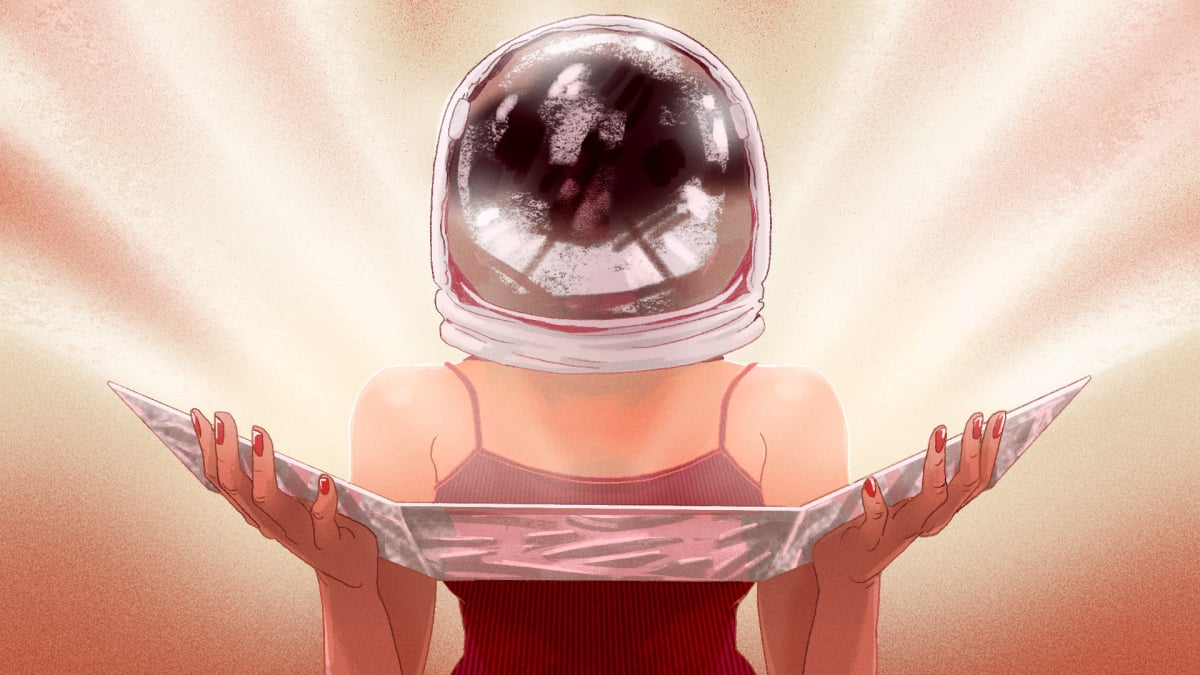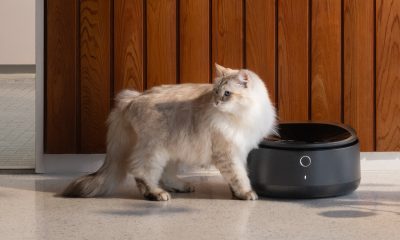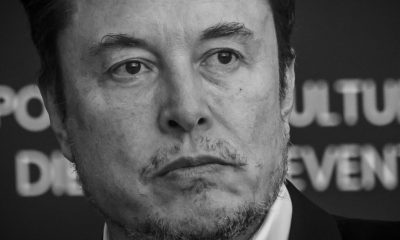Entertainment
NASA discovered bacteria that wouldn’t die. Now it’s boosting sunscreen.

Many people associate NASA with exploring new worlds in space, but few know it’s also finding new microscopic ecosystems right here.
Years ago, Kasthuri Venkateswaran, a scientist who decontaminates spacecraft bound for Mars, found a curious microorganism on the end of his swab. The bacteria, which he named bacillus pumilus, was so resilient, the usual cleaning solutions — ultraviolet light and peroxide — wouldn’t kill it.
That discovery led to sending a specimen to the International Space Station, where astronauts hung it outside the laboratory 250 miles above Earth to see what would happen. When the sample came back, many of the spores were still alive, even after 18 months of exposure to cosmic radiation.
The research was shelved, and a sample of the microbe literally went into a freezer. But 25 years after its first detection, a Massachusetts-based company is using it to make a new ingredient for sunscreen, leveraging its UV resistance.
The story of spaceship to skincare has twists and turns and an unusual cast of characters. It starts with Kyle Landry, who had began his career in food science. Landry developed an expertise in extremophiles — organisms that can live in the harshest Earth environments — and even discovered a new species of fungus.
Landry had been focused on finding new and unique enzymes from certain funguses that grow at high temperatures. When added to foods, these ingredients help produce umami flavors.
David Sinclair, a geneticist at Harvard Medical School, took notice of Landry’s work and offered him a postdoctoral position at his lab. Sinclair, whose research centers on why humans age and how to slow its effects, was interested in understanding how extremophiles can live such long lives and repair themselves in hostile environments.
From there, Landry started working for Liberty Biosecurity, a company in the biodefense sector co-founded by Sinclair, trying to neutralize anthrax and the Black Plague with extremophile enzymes that are good at breaking down organic material.

Kasthuri Venkateswaran discovered bacillus pumilus on a spacecraft in a NASA cleanroom in 1999.
Credit: NASA
The contractor eventually started working with NASA to develop compounds that could protect the human genome from the harmful effects of cosmic radiation.
“It’s not the rockets that are limiting us from going to Mars,” Landry said. “It’s our own biology to withstand nonstop radiation for six months.”
The partnership put Landry at the right place at the right time to learn about NASA’s treasure trove of extremophiles, ripe for more research and commercialization. At the space agency’s Jet Propulsion Laboratory, scientists have discovered hundreds of these hardy little lifeforms while trying to clean spacecraft before the hardware leaves the planet. The United States has signed an international treaty to avoid introducing contaminants to extraterrestrial environments.
Mashable Light Speed

At NASA’s Jet Propulsion Laboratory, scientists have discovered hundreds of these hardy little lifeforms while trying to clean spacecraft before the hardware goes to other worlds.
Credit: NASA
To comply, NASA has sought to sanitize Mars rovers at a threshold of no more than 300,000 bacterial spores on any surface area exposed to the Martian environment. That process has revealed plenty of microbes that can survive high temperatures, low nutrients, and a lack of moisture.
Venkateswaran has been collecting the specimens to have a record of the types of so-called “dead bug bodies” that could remain on NASA equipment. That way, if a rover shovel digs up some Martian dirt and puts it in a test tube, scientists have an idea of whether potential evidence of a primitive organism is an alien or just a hitchhiker from Earth. Regardless of NASA’s greatest efforts, there’s no full-proof way to make a spacecraft spotless, a point John Grunsfeld, NASA’s former chief scientist, drove home in 2015.
“We know there’s life on Mars already because we sent it there,” he said then.

Twenty-five years after the first detection of a strain of bacteria, a Massachusetts-based company is using it to make a new ingredient for sunscreen, leveraging its UV resistance.
Credit: Delavie Sciences
Venkateswaran’s other reason for saving extremophile samples is to learn how to improve cleaning methods. The strain of bacillus pumilus, for example, was used as a final witness for the eradication of everything else in that cleanroom, said Dan Lockney, executive of NASA’s technology transfer program.
“If that bacteria was eliminated,” he said, “they determined that that cleanroom was as sanitized as possible.”
“If that bacteria was eliminated they determined that that cleanroom was as sanitized as possible.”
Now for how the bacteria ended up in the sunscreen business.

Delavie Sciences has launched its own brand of skincare products, Aeonia, using its version of bacillus lysate.
Credit: Delavie Sciences
NASA urged Landry to take a look at its catalog of patented organisms. When he saw this one’s potential for absorbing UV radiation, he licensed it, then spent the next two years figuring out how to make an extract from the bacteria. (The proprietary product itself, known as bacillus lysate, doesn’t contain any live bacteria.)
“We endeavor to make sure all the things that we develop for these space missions also find their way into consumer goods and industrial applications and manufacturing processes and into hospitals and grocery stores,” Lockney said.
Seeing that a biodefense company doesn’t have a place in cosmetics, Landry formed a spinoff company, called Delavie Sciences, which now makes the SPF booster in 15,000 liter reactors and sells it in bulk quantities to sunscreen manufacturers.
By now it’s pretty much common knowledge that sunscreen is the greatest way to reduce skin damage from the sun. Too much UV exposure can cause cancer and age-related skin problems, like wrinkles and spots.

Delavie Sciences CEO Kyle Landry goes on oil rigs and in abandoned gold mines to find new biology that could become the next big thing in extremophiles.
Credit: Kyle Landry
Sunscreens are rated with SPF, short for Solar Protection Factor, which measures how much UV radiation is necessary to penetrate the barrier to burn. The use of Delavie Sciences’ bacillus lysate, which absorbs UV, increased an SPF 30 sunscreen by 22 to 33 percent, a range based on different amounts tested, according to a study published in the journal Cosmetics in October 2023.
Delavie Sciences has also launched its own brand of skincare products, called Aeonia, using its version of bacillus lysate for another application. The ingredient seems to activate skin cells’ own production of hyaluronic acid, which has been shown to help grow collagen and elastin.
Like Willy Wonka looking for the next exotic chocolate flavor, Landry now goes on oil rigs and in abandoned gold mines hunting for new biology that could become the next big thing in extremophiles. But he emphasizes that his business wouldn’t have been possible without NASA.
“People think NASA is just rockets and satellites and freeze-dried ice cream,” he said. “There’s so much more that comes to us from NASA that goes under the radar.”
-

 Business7 days ago
Business7 days agoUnitedHealth says Change hackers stole health data on ‘substantial proportion of people in America’
-

 Business6 days ago
Business6 days agoTesla’s new growth plan is centered around mysterious cheaper models
-

 Business5 days ago
Business5 days agoXaira, an AI drug discovery startup, launches with a massive $1B, says it’s ‘ready’ to start developing drugs
-

 Business5 days ago
Business5 days agoUK probes Amazon and Microsoft over AI partnerships with Mistral, Anthropic, and Inflection
-

 Entertainment3 days ago
Entertainment3 days agoSummer Movie Preview: From ‘Alien’ and ‘Furiosa’ to ‘Deadpool and Wolverine’
-

 Business4 days ago
Business4 days agoPetlibro’s new smart refrigerated wet food feeder is what your cat deserves
-

 Business6 days ago
Business6 days agoTwo widow founders launch DayNew, a social platform for people dealing with grief and trauma
-

 Entertainment6 days ago
Entertainment6 days agoTesla’s in trouble. Is Elon Musk the problem?




























